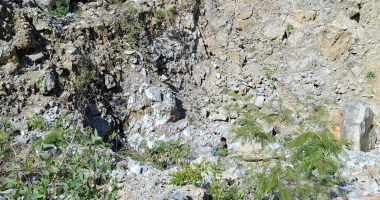On Tuesday, Australia’s central bank delivered a decision on the cash rate which – while being largely on-target with what many economists and the four major banks had expected – was also out of step with the language of concern around inflation which accompanied the decision.
The Reserve Bank of Australia elected to leave the rate on-hold at 4.35% during its August 5-6 meeting, with this being the seventh consecutive meeting without a change, since the cash rate was raised back in November 2023, from 4.10%.
Leading up to the decision, investment bank analysts had predicted the RBA would keep it unmoved, with this confidence largely boosted by a CPI reading released the previous week which showed a trimming of mean inflation for the June quarter to 3.9%, down from 4.0% in March, with this being lower than the market had expected.
However, following the decision, Reserve Bank Governor Michele Bullock told the press: “Make no mistake: inflation is still too high, and the board does remain concerned about the degree of excess demand in the economy”.
Explaining that the inflation rise had started during the Covid-19 pandemic – when supply shocks coalesced with growing demand for goods – Ms Bullock said the former had largely worked their way through the system, but demand was continuing strong.
With this in mind, she said the RBA needed to ‘stay the course’ to keep inflation in check, and ideally get it back to the target range of between 2 and 3%.
“The more inflation remains elevated, the more it hurts everyone,” she added.
Saxo Head of FX Strategy Charu Chanana said that while the decision to pause the cash rate had been priced-in, a lack of guidance from the RBA regarding future strategies to tackle inflation was concerning.
“While markets have removed the odds of another rate hike from the RBA after the softer Q2 CPI last week, there were no clear signals from the meeting for the markets to start considering rate cuts,” she said.
She noted that changes in the global economy had now put the onus on other central banks to consider rate cuts.
Thus, stronger statement might have been needed from the RBA, given recent global economic volatility – with recession concerns still in the background, despite markets making a recovery following a two-day rout on Wall Street at the beginning of the week.
Australia’s currency could be particularly hard-hit by hints of recession – Ms Chanana said – given the likely negative impact on commodity prices, a key driver for the Australian economy.
“There has been a sharp selloff in global equity markets amid increasing concerns about a US recession,” Ms Chanana said.
“This has accelerated calls for the Federal Reserve to deliver rate cuts sooner, potentially even before the September meeting, or to go big with a 50bps cut in September.
“Given the shift in the macro backdrop, the RBA lack of guidance on its rate cut plans at the August meeting seems to be a misstep: this could be problematic if global growth deteriorates beyond the soft landing many have hoped for.”
Head of macroeconomic forecasting for Oxford Economics Australia Sean Langcake said the August meeting had been a ‘close-run decision’ until the CPI release had come in last week.
But he expressed concern about the inconsistency of what the Reserve Bank was saying about sticky inflation in the economy, and what they were actually doing.
“The RBA’s statement remains vigilant against upside risks to inflation. But once again, the RBA’s cautious and hawkish messaging has not been backed up with any action,” he said.
“The RBA’s forecasts are projecting a more volatile path for inflation due to the impact of government policies announced in the last budget.”
He added that the RBA seemed to be watching the Australian economy for signs of sluggishness – appearing concerned about a weaker outlook for jobs in particular, although a rate cut this time around could have kickstarted a pushback on inflation trends.
“Interestingly, underlying inflation is now expected to chart a slower course back to the midpoint of the target range,” he said.
“But this outlook has not stirred the RBA to action this month. Indeed, this outlook is tempered by a slightly weaker outlook for the labour market than the one presented in the May forecasts.”
Mr Langcake said a rate cut was not likely until early 2025.








